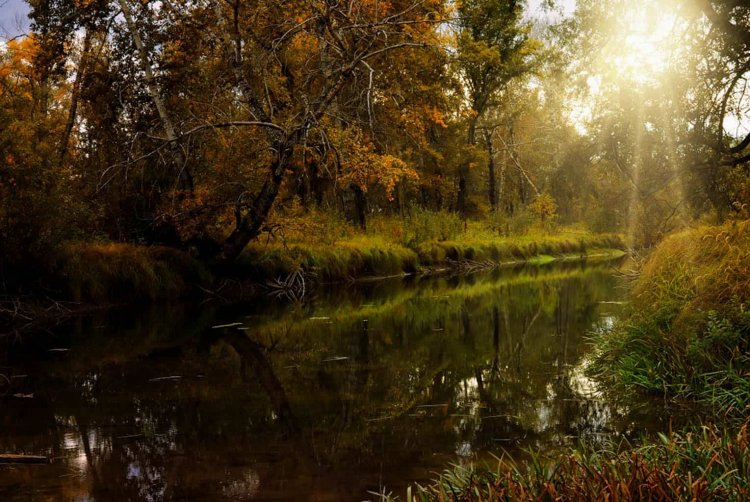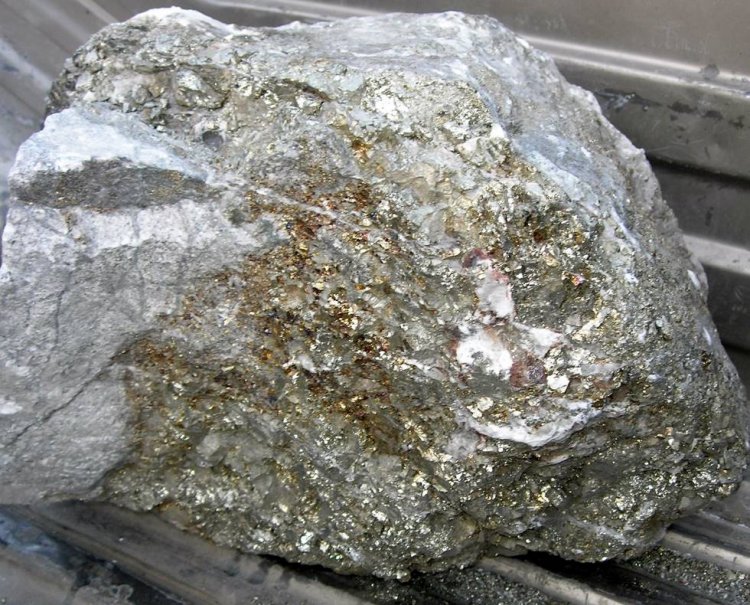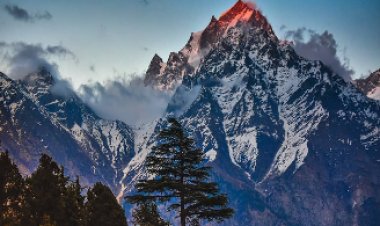Natural Resources of Nepal: Key to Development
Explore the natural resources of Nepal, such as its mineral, forestry, and water resources. Learn the importance of properly utilizing natural resources for the sustainable development of Nepal.

Natural resources are free gifts from nature, which include land, climates, forests, water, minerals, etc. Nepal is rich in natural resources. If Nepal could utilize the available natural resources properly, it would be developed within a short period of time. Most developed countries have got prosperity from the proper utilization of natural resources, and only the proper utilization of natural resources makes a country prosperous.
Water Resources:

Among all the natural resources of Nepal, water resources are regarded as one of the most important. There are more than six thousand rivers, including major and minor, with a length of more than 4500 Km. There are a large number of lakes and springs as well. Koshi, Narayani, Gandaki, Rapti, Veri, Karnali, Mahakali, etc. are the major rivers of Nepal. Likewise, Rara, Phewa, Begnas, Tilicho, etc. are the major lakes. Nepal's regular sources of water resources are the Himalayan glaciers and rainfall. With regard to water resources, Nepal stands in the 43rd position in the world with approximately 210 cubic kilometers of total renewable internal freshwater resources. Water resources are also termed "white gold" for the Nepalese economy. If the available water resources are properly utilized, Nepal can easily be converted into a developed country.
Importance of water resources:
-
Development of agriculture
The development of agriculture entirely depends upon the development of irrigation in Nepal. Nepalese agriculture still depends on monsoon rain. The development of irrigation and modernization of agriculture depend directly on water resources.
-
Development of transportation and communication
Energy generated from water resources can be used to run electric means of transport such as electric buses, cable cars, electric trains, ropeways, and other electric vehicles. Similarly, with proper water resource utilization, means of communication such as telephone, internet, fax, radio, TV, and so on can be developed.
-
Tourism development
Tourism in Nepal has a close relationship with natural setting. Since rivers, waterfalls, natural springs, lakes, etc. add the natural beauty of the country; it would help to develop tourism industry by providing different facilities like rafting, boating, and swimming and etc.
-
Basis of good health
Development of water resources helps to provide pure drinking water which leads to basis of healthy life. It helps not only to increase the productivity of labour but also to raise of living standard of people.
-
Employment opportunity
The development of water resources helps to create more employment opportunities. Since hydroelectricity helps to develop agriculture, tourism, etc. the economic activities in the country increases.
Uses of water resources:
-
Hydroelectricity
One of the main uses of water resources is hydroelectricity production. The first hydroelectricity project is the Pharping hydroelectricity project, which was constructed in 1968 BS during the Rana rule. Hydroelectricity is accessible to 77 districts of the country, and 93% of the population has access to electricity.
-
Irrigation
Irrigation is another important use of water resources in Nepal. It is known as the lifeblood of agriculture. Without irrigation facilities, the development of agriculture is not possible, and without the development of agriculture, economic development is not possible in Nepal. One of the main reasons behind the slow development in the agriculture sector is the lack of adequate irrigation facilities. Of the country's total 2,641,000 hectares (18%) of arable land, the irrigation command area is only 1,766,000 hectares (67%). By 2020/21, the command area of irrigation facilities had reached 58.07% of total irrigable land. However, around the year, irrigation facilities are available on 33% of total irrigable land.
-
Drinking water
Drinking water is essential for human existence. Human life is impossible without drinking water. Although Nepal is rich in water resources, people here face an acute shortage of safe drinking water in both urban and rural areas. The supply of sufficient safe drinking water to all the people in the state creates a good environment for achieving prosperity in the economy. According to the census of 2068, 47.84% of people have access to pipeline drinking water and 35% use the sallow-tube well for drinking water. According to the economic survey 2020/21, 91% of people have access to basic drinking water services. However, only 23% of people have access to high or medium-level drinking water services. The fifteenth plan (2019/20-2023/24) has set the target of providing drinking water facilities to 99% of the total population.
Forest Resource:

Forest resources are the other most important natural resources of Nepal. It stands in a significant position for economic development as well as to maintain the environmental balance of Nepal. Forest resources are the most important for the economic development of a nation as well as for the conservation of the natural environment. Nepal was very rich in forest resources in the past. It is evident from the old saying "Hariyo Ban Nepal Ko Dhan" (the green forest is the wealth of Nepal). Nowadays, the condition of Nepalese forest resources is not as good as it was in the past. In Nepal, forests have covered 5.962 million hectares of land and wooded land has covered 0.648 million hectares of land. Altogether, the total area covered by forest is 44.8% of the total land area. By province, Karnali province occupies the highest forest areas, and province No.2 occupies the lowest.
Importance of Forest Resources:
-
Source of energy
Forest resources are the main source of energy in Nepal. Firewood is the cheapest source of energy that comes from the forest. According to the 2011 census, only firewood fulfils 64% of the total energy demand of Nepal in household use.
-
Source of raw material
The raw materials for different industries, such as paper, medicine, plastics, matches, and furniture, come from the forest. As a result, the development of such industries is heavily reliant on a consistent and sufficient supply of raw materials from the forest.
-
Sources of foreign currency
Various products such as timber, herbal products, industrial raw materials, and wooden handicrafts are collected as well as produced from the forest and can be supplied to neighboring countries to earn foreign currency.
-
Sources of water
Most of the water resources originate from green hills and mountains. Dense forests absorb rainwater, regulate it into the earth through their roots and help to preserve water at inner levels, and enrich the water table constantly.
-
Maintain environmental and ecological balance
Forests influence local and regional climates, preserve soil and in the case of watersheds, protect soil downstream from floods. Forest resource also provides internal greenery and natural beauty to us. It is very important to maintain an ecological balance between wildlife habitats and human beings.
Mineral Resource:

It is very important to have natural resources for the economic development of a nation. Different types of minerals, such as gold, silver, copper, coal, gas, petroleum products, limestone, iron, etc., which are found in the womb of the earth are mineral resources. Mineral resources play an important role in the economic development of a nation. It is said that Nepal is rich in mineral resources. However, the extent to which commercial utilization of mineral resource deposits is possible is yet to be known. Nepal has many kinds of mineral deposits such as iron, copper, limestone, natural gas, coal, lead, magnetic, nickel, marble, and mica in different parts of the country. Mineral exploration in a scientific manner started in Nepal some 73 years ago. Some of the mineral resources have been used in industrial production, like cement, industrial lime, dead burnt magnetite, polished marble, etc.
Importance of mineral resources:
-
Employment Opportunities
Mineral industries require unskilled, skilled, and highly skilled manpower, which creates employment opportunities for all types of human resources.
-
Development of new industries
The development of new industries from cottage/micro industries to large-scale industries depends on mineral resources. Agriculture limes, zinc, and cement are the main industries of Nepal based on mineral resources.
-
Source of foreign currency
If Nepal extracts large quantities of minerals such as natural gas, diesel, petrol, kerosene, iron, copper, etc. it can save and earn a large amount of foreign currency.
-
Development of transportation and communication
Modern means of transport, such as air, road, and water, and means of communication, such as television, radio, computers, telephones, faxes, etc., are produced by the utilization of mineral resources. Hence, the development of transport and communication is highly dependent on the proper development of mineral resources.
-
Supply of construction material
Different development projects are in operation in different sectors of the economy. Development projects need a high amount of construction materials such as brick, cement, steel, copper, etc. which can be supplied cheaply and adequately if we develop the mineral resource properly.
Frequently Asked Questions (FAQ)
-
What natural resources are important to Nepal and why?
Nepal is rich in natural resources, including water resources, forest resources, and mineral resources. These resources are important for the country's development as they contribute to agriculture, tourism, energy production, employment generation, foreign currency earnings, and maintaining ecological balance. -
What is the most prominent natural resource in Nepal?
Water resources, particularly rivers, lakes, and glaciers, are considered the most prominent natural resource in Nepal. With over 6,000 rivers and abundant water sources, Nepal ranks second in the world in terms of water resources. These resources are crucial for irrigation, hydropower generation, and supporting various economic activities. -
What are the natural resources of Nepal?
The natural resources of Nepal include water resources (rivers, lakes, and glaciers), forest resources (wooded areas), and mineral resources (such as gold, silver, copper, coal, gas, and limestone). -
How do water resources contribute to Nepal's development?
Water resources play a vital role in Nepal's development. They support agriculture by providing irrigation, facilitate transportation and communication through hydropower generation, promote tourism activities like rafting and boating, ensure access to drinking water for a healthy population, and create employment opportunities. -
How do forest resources contribute to Nepal's economy?
Forest resources in Nepal provide multiple benefits to the economy. They serve as a significant source of energy, supply raw materials for various industries, including paper, medicine, and furniture, contribute to foreign currency earnings through the export of timber and wooden handicrafts, help maintain environmental balance, and support wildlife habitats. -
What mineral resources are found in Nepal?
Nepal has various mineral resources, including iron, copper, limestone, natural gas, coal, lead, magnetic, nickel, marble, and mica. These mineral deposits have the potential to support industrial production and contribute to economic growth. -
How do mineral resources contribute to employment opportunities in Nepal?
Mineral industries require different levels of manpower, creating employment opportunities for various skill sets. The development of mineral resources in Nepal can lead to job creation, benefiting unskilled, skilled, and highly skilled individuals, and supporting the growth of industries reliant on these resources, such as cement and zinc production.
What's Your Reaction?




































































































